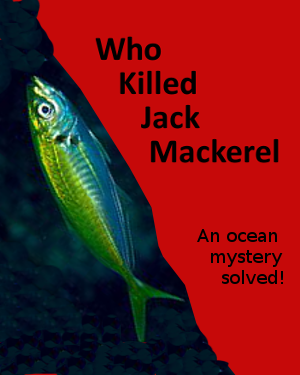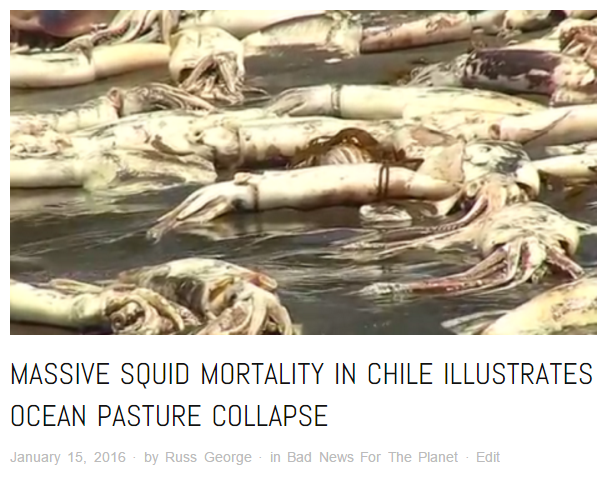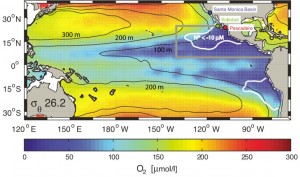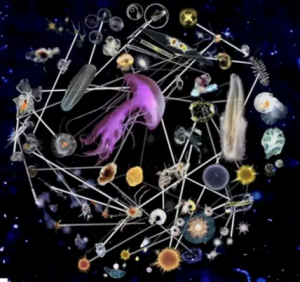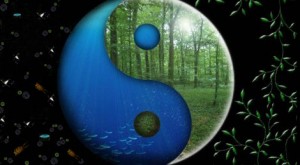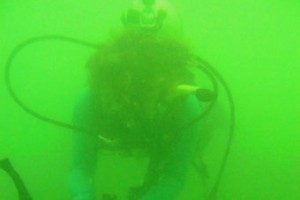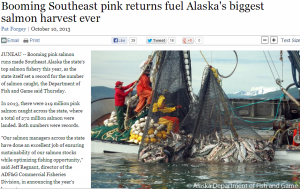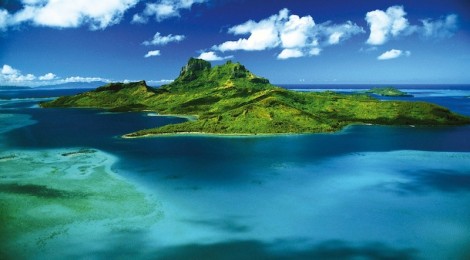
Clearest Water On Earth Grows In Area – The Wonder – The Horror
What do you think of when you hear a report of the clearest water on earth?
For most the idea that comes to mind is one of purity and goodness. Somewhere to aspire to visit and perhaps swim in. Why are those stunningly beautiful waters so clear?
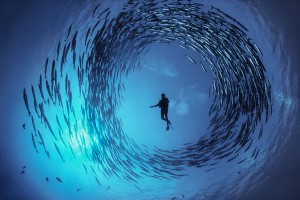
You’ll dive with famed underwater photographer David Doubilet. Maybe get a photo like this one of his.
The answer to that is perhaps not something the top marine celebrities of the world talk about on tours to those beautiful clear waters like this one you can join for a mere $76,950. The National Geo tour operators will whisk your jumbo private jet load of fellow eco-tourists along with 11 of what are billed as top world-class scientists, explorers, and photographers to encounter dazzling marine life in the clearest waters on earth.
But will this new report just out in the journal Science throw that tour into chilling water. The study reveals that the oceans have been growing clearer for the last many decades. This shocking news is reported as if it is ‘good news for the planet.’ After all what could be better than proof that as climate change and global warming are observed to proceed the oceans are becoming clearer.
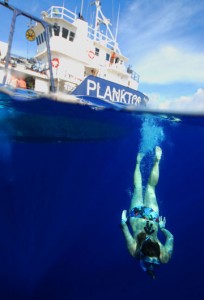
Jenna, one of my marine biologist colleagues diving to look for Salps from my research ship Weatherbird II in Mid-Atlantic. That blue water should be blue green.
This report isn’t the first time I have reported on the “clearest water on earth horror” I wrote about this back in 2007 when I was horrified to read another story about a similar observation published in the top science journal Geophysical Letters.
This clearing water is due to the fact that much less stuff is growing in ocean waters to cloud those waters and heaven forbid sink to the bottom where as they decay they use up precious oxygen. What more joyous news could there be than what the report concludes that the deep ocean ‘dead zones are dramatically shrinking’ by the elimination of all that nasty plankton in the waters above thanks to climate change.
Here are a pair of stories about the region containing the ‘clearest water on earth’ the SE Pacific. One is about the well reported collapse of ocean fisheries in the region. What they mostly fish for in that part of the world are jack mackerel but there has long been some amiss as this story of WHO KILLED JACK MACKEREL tells.
Now very recently, Jan 2016, there is adire report of tens of thousands of squid washing up dead on the beaches of Chile. It seems again many are calling it a mystery but in fact there is no mystery at all, it is the result of those clearest waters on earth again.
What flavor koolaid are these people drinking to suggest this is good news?
Are they absolutely insane or merely inane?
What could possibly be worse news for the planet?
It’s as if we were being told that the solution had been found to eliminating all the bird shit in our cities had been found, just kill or starve all the birds, problem solved. (Oops.)
Want beautiful clear ocean waters to swim in on holiday, kill all ocean life! We’re doing it, let’s un-do it. I’ll show you how.
The new paper in Science proclaiming ocean dead zones are shrinking reveals part of a complex story of climate change. Reports lauding the new paper say while many climate change forecasts are grim, there are exceptions – the lowest-oxygen environments in the ocean formerly forecast to get worse, may in many areas shrink in size.

We asked a world-class expert on the environment about this – Tarzan say, “Deep ocean dead zones bad, surface ocean dead zones more beautiful.” wtf!
Warmer water can hold less of any gas, so with climate change it has been expected this would reduce oxygen levels worldwide. Observations show this is already taking place in some places. Declines during the past 20 years in the tropical low-oxygen zones, the lowest-oxygen waters on the planet, had led to a 2008 contrary study proposing that these zones would also get worse over time.
But when conditions really get bad and drop even further, a particular group of bacteria, which can use nitrogen instead of oxygen as a source of energy, thrive. Nitrogen is an essential and very scarce nutrient for marine plants.
When oxygen levels get low enough for that particular group of bacteria to take over, significant amounts of the ocean’s fertilizer get deep-sixed to the bottom of the tropical ocean. Take away the nitrates and ocean phyto-plankton have nothing to support their survival and growth.
The extent of oxygen deprivation in the OMZ largely reflects how much phytoplankton is being produced on the surface, Thunell says. Plenty of phytoplankton production at the surface means less oxygen underneath.
And that, the team thinks, is why the oxygen concentrations in the deep Pacific Ocean so clearly increased in measurements dating back 1950.
The new paper shows that water flowing into the tropics is indeed likely to get lower in oxygen, decreasing the initial oxygen supply. But it also proclaims that this is changing under climate change.
The whole sequence of events that feeds this bacterial food chain is slowing and will slow down dramatically, and the low-oxygen zones will shrink.
“The tropics should actually get better oxygenated as the climate warms up,” exclaims Curtis Deutsch, a University of Washington associate professor of oceanography. “If we want to understand how biological and chemical aspects of the ocean will change in the future, we really have to pay a lot of attention to what happens with the winds. The winds can lead to conclusions that are exactly the opposite of what you’d expect.”
Naturally the means for the clearing up of deep ocean oxygen dead zones is surface ocean dead zones devoid of plankton and vibrant ocean pastures full of poop producing ocean life.
Let me be the first to toss a big beautiful murky greeny bucket of ocean water full of life on these guys parade.
First off lumping surface ocean and deep ocean together is inane. It’s like saying the sand on the beach comes from the erosion of the mountain top. Sure that is sort of true but to compare ecological processes in the two environments as linked is preposterous. Something only a mathematician would dare to do.
Want to see some real ocean beauty… look inside this link to a world of wonder video.
The fact is that the surface ocean is the most important environment on this planet, you know the blue planet. Since the vast majority of our oxygen comes from ocean phytoplankton, something like 80-90% that is a very important environment filled with varied ecosystems. Most important of all are the ocean pastures that harbour and sustain and are sustained by plankton blooms.
No matter how beautiful the idea of the clearest water on earth might be it is sheer horror to the vast majority of life on the blue planet. We must not allow the clearing of ocean waters to proceed. And the reason the oceans are clearing is that our high and rising CO2 is preventing the most vital nutrient for ocean plants from reaching them. That nutrient is dust in the wind.
As our high CO2 feeds plants on land they grow better.
More grass growing means less dust blowing!
Read more on the Yin and Yang of Rain and Dust feed pastures on land and at sea.
We can restore and revive ocean pastures and their plankton blooms.
We have done it. It just works! And the beneficial results are delivered to us readily, they swim into our nets and onto our plates in the form of historic abundances of fish.
In the bargain the revived ocean plant life, in our phyto-plankton blooms convert billions of tonnes of our CO2 from its ocean killing forms into ocean life itself. And yes as we restore ocean pasture productivity to the levels of health and abundance the oceans and we enjoyed 100 years ago considerable amounts sink into the abyss and surely decay there consumes some oxygen.
Not an un-natural condition given that what we seek to achieve is a return of ocean pastures to the state they were in a century ago.
In our 2012 large-scale demonstration project we have successfully restored the most vital ocean salmon nursery pasture in the NE Pacific. The returning salmon right now are swimming into rivers and streams from Alaska to the Columbia in the largest runs of salmon in all of recorded history.
Want to know how difficult and expensive it is? In my 2012 project that brought back 500 million additional salmon by restoring their vital ocean salmon nursery pasture — the dust needed cost just about the same as one single ticket on the luxury eco-tour mentioned above!
We can help Mother Nature if we don’t delay, take dust back to her ocean to save the day!









